Dalit and Adivasi Women at the Forefront of the Forest Rights Movement in India
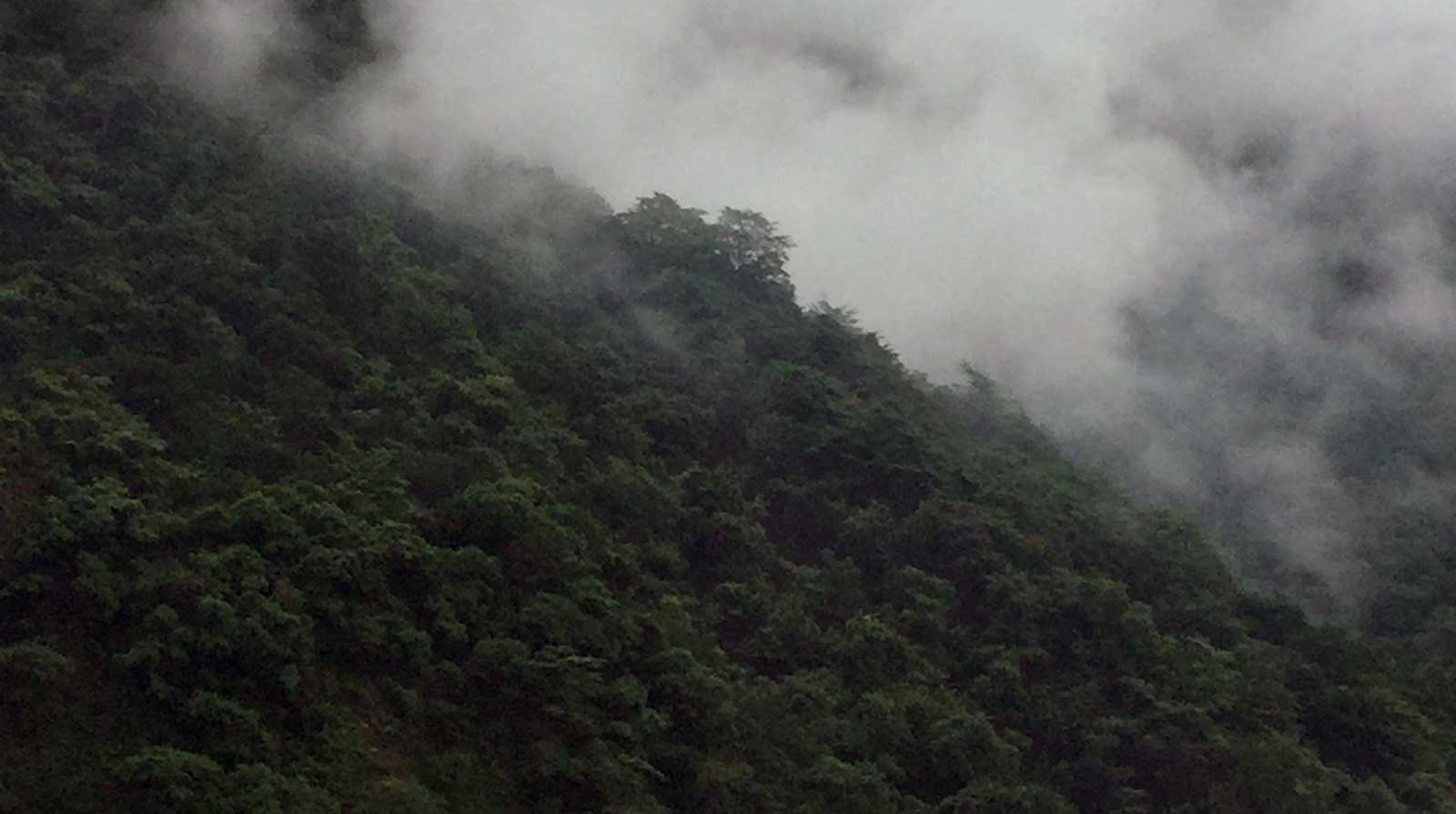
An Interview with Roma Malik and Ashok Chowdhury of the All India Union of Forest Working People
The Supreme Court of India is set to rule on a case, Wildlife Trust Vs the Union of India, which could result in the eviction of 1.9 million forest dwellers from the country’s Indigenous and traditionally marginalized communities. At the crux of the case is a petition filed with the Supreme Court by elitist conservation organizations and retired forest bureaucrats to contravene the Forest Rights Act, a progressive forestry law that has attempted to rectify the “historic injustice” meted out to these communities. By recognizing them as the rightful inhabitants of the land and guardians of its ecology, instead of treating them as encroachers, the FRA’s reparative approach recognizes the pre-existing individual and community forest rights.
“The struggle of the Indigenous for control over their own forests and resources is as long as their history of oppression — first by the forest department of the British Raj, and now by our own countrymen.”
Roma Malik
While the Solicitor General of the country has made a belated feeble attempt to defend this law, Indigenous activists and civil society actors have filed applications for amendments to make them party to the case, next due for hearing on September 12, 2019. On July 31, at the offices of the Delhi Forum, Oakland Institute’s Research Associate, Janhavi Mittal, spoke to Ashok Chowdhury and Roma Malik, office bearers of the All India Union of Forest Working People (AIUFWP). AIUFWP — the first national union of Adivasi & Dalit communities representing the traditional workforce in India –has spearheaded this legal struggle. Along with Roma, the AIUFWP’s leaders — Sokalo Gond and Nivada Rana, are the only two Adivasi women who have taken on the legal mantle of this fight. Here, Roma and Ashok explain how the struggle for forest rights extends beyond this legal struggle, and why women from marginalized forest dwelling communities are at the forefront of this fight.
Q: The AIUFWP has been involved in the struggle for forest rights, even before undertaking the legal battle in the Wildlife Trust Vs the Union of India case. Before we discuss the case, can you please share more about the forest people’s movement that led to the inception of the AIUFWP?
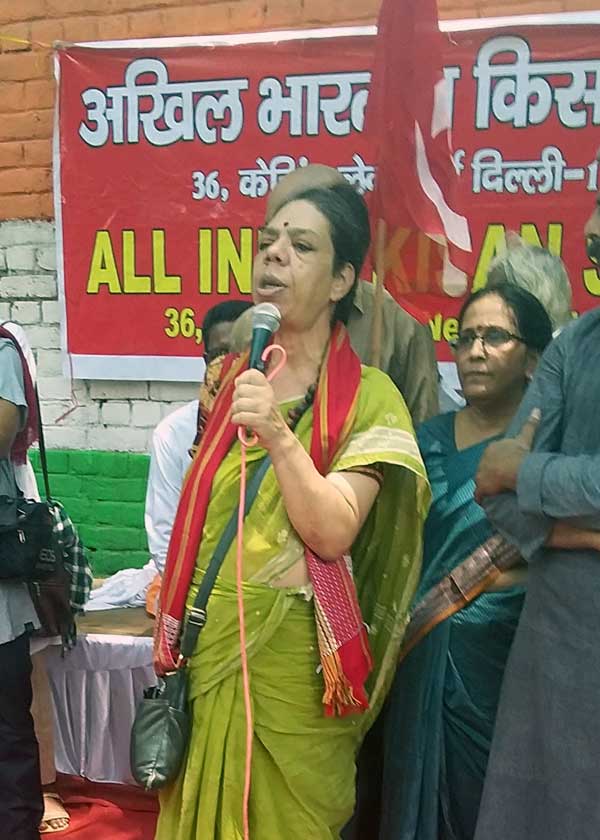
Roma: The All India Union of Forest Working people was founded in Puri in 2013, and today has a membership of over 25,000 people from forest dwelling communities across 11 states. Forest people’s movements, however, have long predated the AIUFWP. The struggle of the Indigenous for control over their own forests and resources is as long as their history of oppression — first by the forest department of the British Raj, and now by our own countrymen. Of course, international capital too plays a role. But it is since the 1990s that localized struggles started gaining a nation-wide character. As progressive legislations, beginning with the 1996 PESA (Panchayats Extension to Scheduled Areas) Act and then later, the Forest Rights Act (2006), and the Unorganised Workers’ Social Security Act (2008) were introduced that would empower and recognize the rights of forest communities, a need for a collective union was recognized. It was felt that as a union, the AIUFWP will be able to enhance the collective bargaining power of forest workers, while pushing for a better implementation of progressive legislations, which were continuously being undercut by state-led anti-people policies.
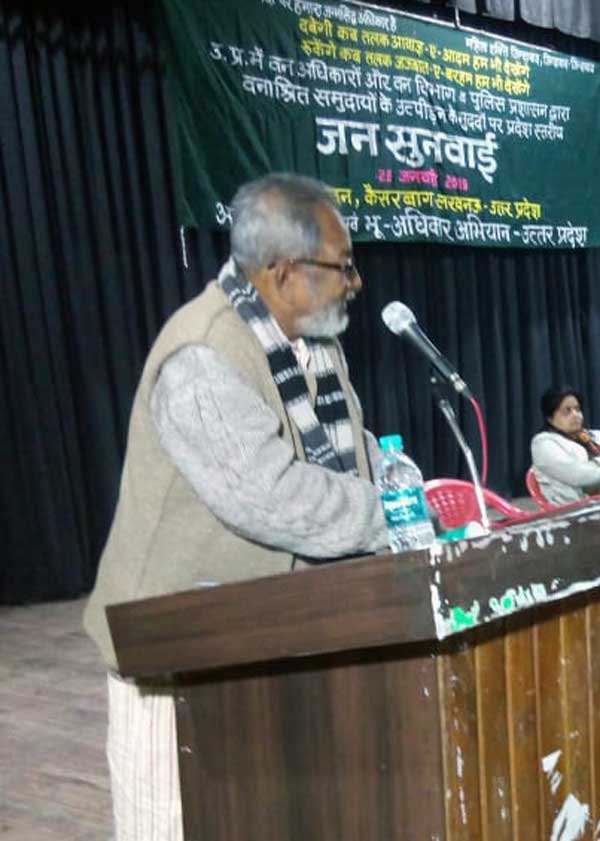
Ashok: The defining moment was the formation of the National Forum for Forest People and Forest Workers in 1998. As the structural adjustment policies of the 1990s set the stage for accelerated exploitation of our natural resources, it was also important to articulate the rights of forest dwelling communities using the language of labor rights. By recognizing forest dependent communities as forest workers, the scope of forest rights included individual and community land, resource, and livelihood rights, as well as access to labor protections and social security programs — including the right to employment, guaranteed minimum wages, and employment guarantees. Furthermore, a new form of political consciousness developed when forest workers associated with the struggles of other trade unions under the New Trade Union Initiative in 2001. The participation of forest workers at the World Social Forum in Mumbai in 2004, led to the forging of international solidarity in the struggle for environmental justice and the collective rights of the Indigenous and traditional forest dwelling people. This realization of the importance and strength of a union for asserting individual and collective forest rights, coupled with the need for establishing national and international solidarity, led to the formation of the AIUFWP.
Q: The membership and leadership of the AIUFWP is mainly comprised of Adivasi and Dalit women. How did this come about?
Roma: While the AIUFWP actively strives to inculcate female leadership, it is however an organic development that many of the courageous struggles for forest rights have been led by Adivasi and Dalit women. One main reason for this is the division of labor within forest communities. A vast majority of the work, particularly that involves the assertion of community forest rights - the collection of firewood for example — is done by women. Although the women also do farm work, majority of the men not economically displaced into becoming migrant labor in urban areas, are primarily engaged in agricultural tasks. As a result, it is the women forest workers who first encounter the Forest Department’s brute power. Also, Adivasi and Dalit women who have historically never been strangers to state violence, better understand the importance of collective bargaining power and community rights, making them relentless defenders of the rights of their communities over the forestry commons.
At the AIUFWP, we recognize that when women take on the mantle of any struggle, it no longer is undefeatable. We hold special workshops every year led by Adivasi and Dalit women that train our members in dealing with the forest bureaucracy and the process for claiming their forest rights.
Our workshops also collectively work towards developing a vocabulary to challenge state violence. We do collaborate with other women’s organizations, but very often the conversation on feminist issues does not explicitly focus on the question of land rights. By highlighting the issue of women’s collective rights, our workshops attempt to be a corrective to the middle class feminist understanding of land rights, understood within the framework of private property. For forest dwelling Dalit and Adivasi women, the relationship with land is material as well as cultural and ecological. For them land is life and livelihood, and this nuanced understanding of land cannot be reduced to a discourse on private property.
Ashok: From their frequent encounters with the Forest Department, our members have realized that the deeply ingrained patriarchy of these officials has been a significant hurdle in the proper implementation of the FRA — a feminist legislation, which considers women as equal rights holder as the men and recognizes them as heads of households, thus empowering abandoned, widowed, and single women. While the Forest Department first encounters women and does not spare them the atrocities of state violence, it refuses to negotiate with them. Many are asked to send their husbands when they make their claims under the FRA. We are training our female members in contesting this patronizing attitude of the state.
Roma (laughs): The Forest Department also doesn’t like women to be the direct negotiators because, unlike men, they cannot be easily manipulated or intimidated.
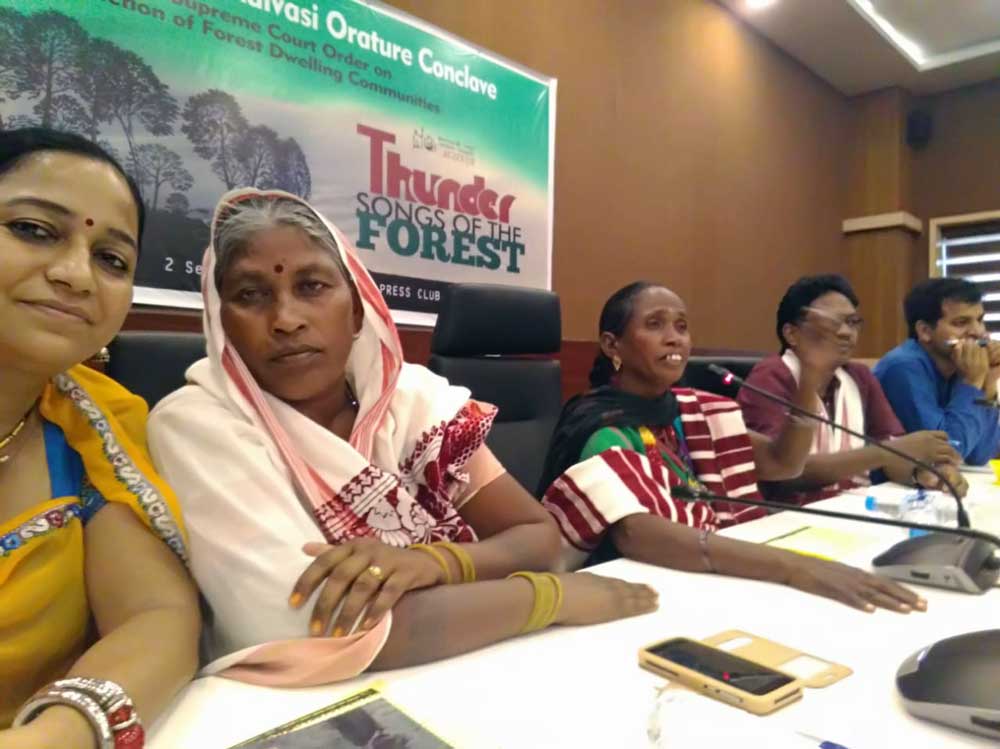
Q: You both stressed on the Forest Department’s attitude as a hurdle in the implementation of the FRA. Can you please elaborate on other such reasons for its poor implementation?
Roma: The lack of political will to implement an act that recognizes traditional forest dwelling communities as conservationists and the rightful owners of the forestry commons, when the predominant attitude has been to treat them as encroachers, has been a major hurdle.
Ashok: In addition to the lack of political will of governments and forest bureaucracies, associated vested interests are also behind the poor implementation of the FRA. In India, the Forest Department has historically functioned with complete impunity — acting like the new zamindars after the British left. Their officials cannot digest the idea of forest dwellers actually having sovereign control over their own homelands. Neither can they imagine women from marginalized communities being their interlocutors or comprehend the idea of community forest rights and collective, democratic control over forest produce.
The FRA, which was under the purview of the Ministry of Tribal Affairs, rather than the Ministry of Environment (Forests and Climate Change), has always made forest bureaucrats uncomfortable. We have often observed that government officials are only involved in implementing schemes where large revenue is created for them to control. The FRA mostly focuses on community rights — 10 out of 13 rights guaranteed under the FRA pertain to community rights, so it does not end up creating beneficiaries to the disappointment of the Forest Department, but instead recognizes rightful owners. Actually, the recognition of communities’ rights to forest resources and the collective ownership of income generated from these forest resources would mean a multi-crore rupee [several million US dollars] loss of revenue for the Forest Department. By marginalizing the communities claiming rights over forests and focusing the discussion of forest rights on individual pattas (land titles), the Forest Department seeks to retain overall control over the forests.
Roma: While this is often done in the name of forest protection and conservation, the only thing protected by non-implementation of the FRA is the personal interest of corrupt officials, politicians, and corporations. There have been numerous cases where Adivasi women have protected their forest against poachers and looters who were in cahoots with the state. Much of the animosity regarding the power of gram sabhas enshrined by the FRA comes from their capacity for genuinely democratic forest governance. Unlike gram panchayats that are rarely representative of the interests of the marginalized communities or the Joint Forest Management committees that are often nominated proxies for the forest department, the gram sabhas by virtue of including every village adult are a challenge to this nexus of power.
Another hurdle in the implementation of the FRA has been the way the data around forest land has been fudged. While there are bureaucratic lapses, there is no national level data regarding the land claims and land use of other traditional forest dwelling communities. There is also deliberate misrepresentation of non-forestry, agricultural land as forestland. By doing this, non-forestry land was brought under the purview of the Forest Department and therefore not subjected to land reform. This is also why the AIUFWP deliberately grounds its conversation on forest rights in the language of land rights, ownership, access and use.
Q: The Compensatory Afforestation Fund (CAF) Act 2016 is enabling land grabs through the setting up of land banks and plantations in the name of forests, and appears to be in direct opposition to the FRA. What bearing do you think this has on the implementation of the FRA?
The Compensatory Afforestation Fund Act… is only a “win-win” for corporations and forest officials.
Ashok Chowdhury and Roma Malik
Ashok and Roma: The Compensatory Afforestation Fund Act goes against the very spirit of the FRA, but in theory has no constitutional power to undercut the FRA. It is only a “win-win” for corporations and forest officials. However, because of the massive revenue it generates in the form of a compensatory afforestation fund — to be controlled entirely by the Forest Department at the expense of the forest communities — it has been used to undercut the provisions of the FRA. It is no coincidence that the petition against the FRA has been gaining traction so closely on the heels of the pressure to disburse the compensatory Afforestation Fund. Merely a fortnight before the Supreme Court order evicting millions of Adivasis and other marginalized forest dwellers from their ancestral homes, the same judge presiding this current case (Wildlife Trust vs Union of India), ordered the release of crores of rupees (US$7.75 billion) worth of Compensatory Afforestation Funds. However, the CAF Act is only the most recent, though perhaps the least disguised attempt at wresting power away from communities, and giving their forests indirectly or even directly under the public-private partnership (PPP) schemes, to corporations for “management” and exploitation. World Bank forestry schemes of the 1990’s were among the first to exploit the rhetoric of community governance, but only further empowered the Forest Department. The World Bank has now distanced itself from this program, but is now using the logic of carbon credits to in its reckless push for monetizing forests, a principle that also drives the CAF Act. These sham Joint Forestry Management committees are still being championed by other international development agencies and corporations, thus giving the Union Ministry of Environment, Forests and Climate Change legitimacy to undermine the truly democratic power of gram sabhas guaranteed by the FRA.
Q: Finally, as activists in the struggle for forest rights and rights of forest working people, and also as an intervening party in the Wildlife Trust Vs Union of India Case, how do you think this case is going to impact forest people’s movements in the country?
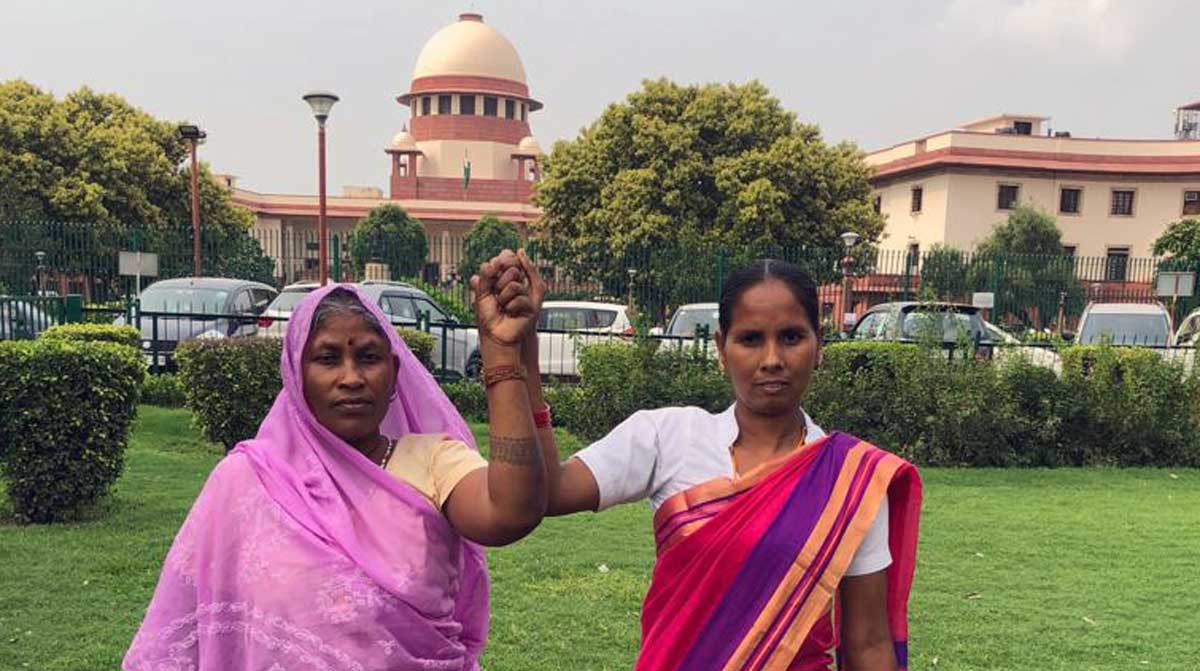
Ashok: The case has no legal ground to stand on. That is why it has taken so many different forms since it was first filed in 2008. The most recent eviction order by the Supreme Court is a travesty but it has further galvanized our struggle. Of course, we are hearing reports of contempt of the stay order issued by the Supreme Court regarding evictions. This is a sign of their impunity to trample on the rights of the marginalized. The new amendments to the Indian Forest Act, further seeks to legitimize this impunity. They were always armed, now they have the legal sanction to use it against the rightful owners of the forest commons by listing them as poor conservationists and encroachers.
Roma: Recently, eight states in India have indicated the rejected claims have not been reviewed properly, so jumping to conclusions about evictions without examining the review process of claim making is just absurd. Civil society groups have pointed out repeatedly the flawed way of data collection about forest areas. Till that becomes available the case is bound to drag on. While organizations like the Citizens for Justice and Peace have been providing us vigorous legal support, two of our Adivasi members - Sokalo Gond and Nivada have been travelling to Delhi from Sonbhadra and Lakhimpur Kheri for these hearings, while battling the brute violence of the state in their villages.
Even a dismissal of this malicious petition is only the tip of the iceberg. As was decided at the National Consultation on Forest Rights Movements organized this July by Bhumi Adhikar Andolan, a platform working for the land rights of communities, winning this case is not the only task at hand. There needs to be a mainstreaming of the FRA and an inculcation of the political will to ensure its proper implementation. To this end, a long nationwide march to Delhi demanding the full implementation of the FRA, as well as the recognition of forest rights and the rights of all traditional forest dwellers as forest workers will be organized on November 28, 2019. In our long-standing attempts at forging bonds of international solidarity, we have realized that even as the struggles of forest dwelling people are localized, the nature of the oppressor is fairly uniform. We hope for the continued solidarity and support of international civil society in our collective struggles.
